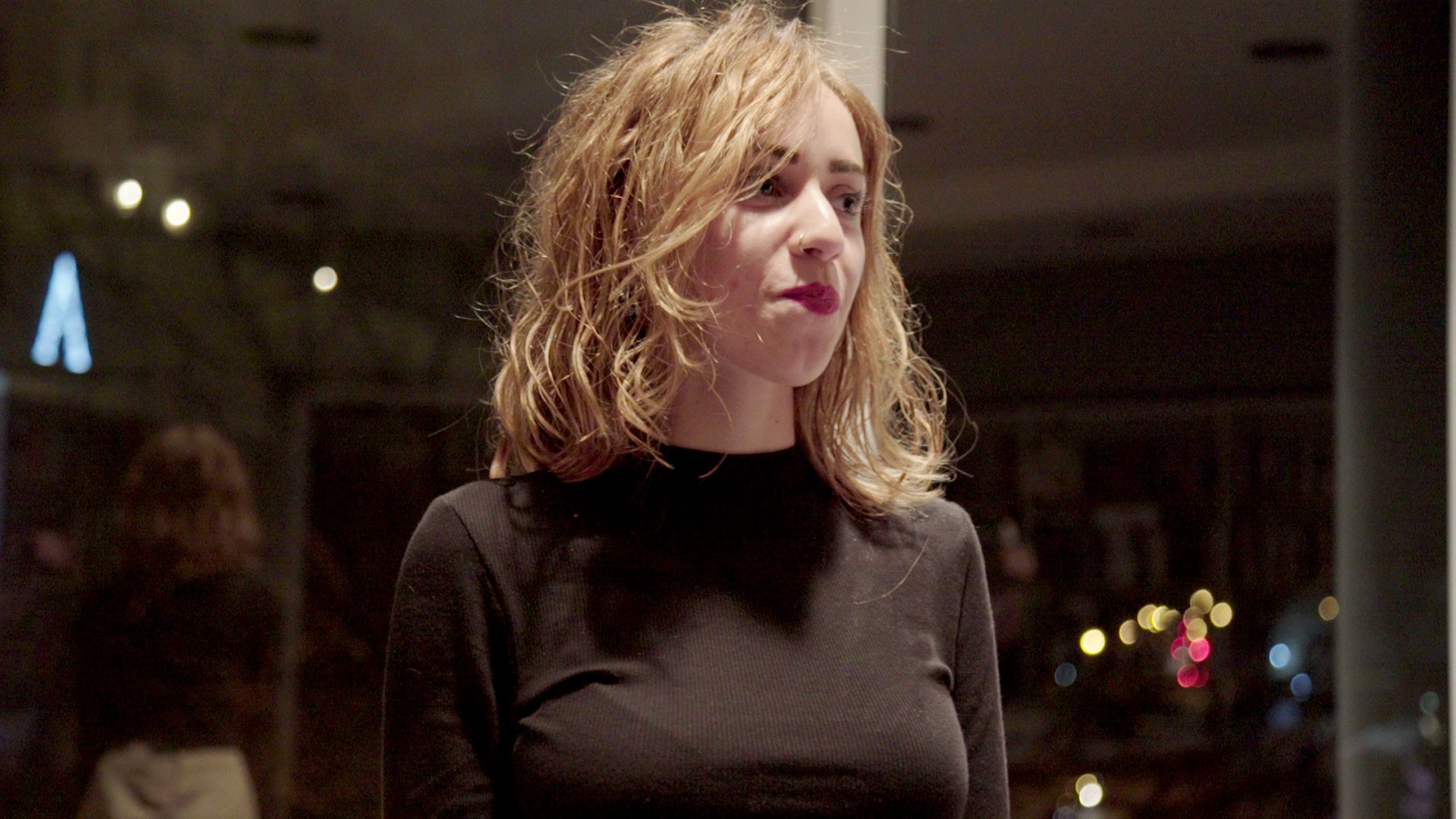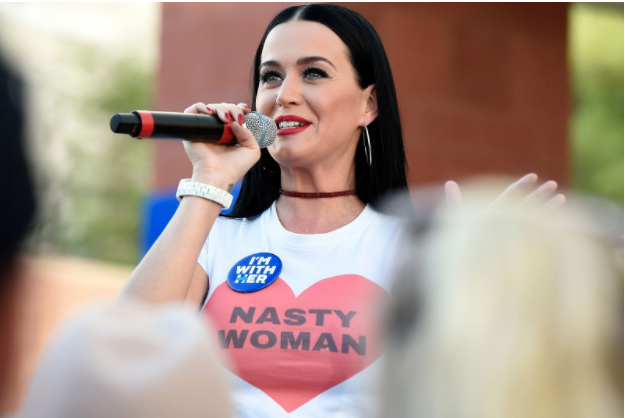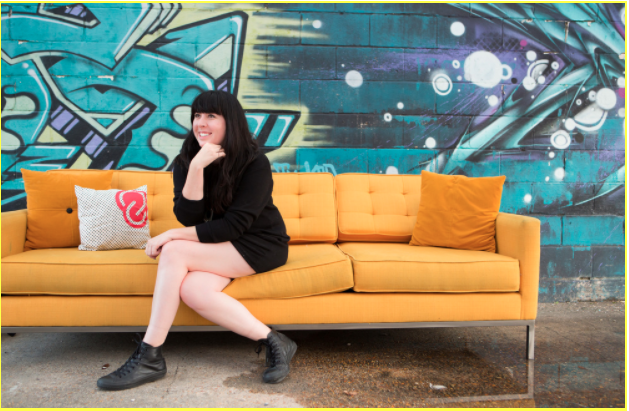This is an opinion piece by Amanda Brinkman, founder of Shrill Society, the creator of the original Nasty Woman t-shirt, and a fellow of the 2017 Red Bull Amaphiko Academy for social entrepreneurs.I knew things were out of hand when I received an email with a menacing death threat and a screenshot of my house from Google Maps. The sender gave me one day to take down the Nasty Woman shirt I created—or “face the consequences.” By that point, the t-shirt had gone viral, and I was learning that it sparked strong emotions from every political perspective.It all started by accident. I was trying to fix my printer while watching the third presidential debate when, along with everyone else in America, I heard Donald Trump call Hillary Clinton a “nasty woman” under his breath. The phrase resonated with me immediately. I’ve been in plenty of meetings where men have called my assertiveness “bossy,” questioned my confidence, and in one instance, given me a demeaning pat on the head while uttering “brilliant idea!” in response to a pitch I had just given. The degradation women often face isn’t a secret, but seeing it on a national stage felt different. If showing up a prepared, confident woman is “nasty” in the eyes of such a reprehensible man, then I’m proud to be nasty.I immediately mocked up a shirt with a simple design—a red heart with black text—that I thought was both funny and wearable, and posted it on Instagram with a promise to donate 50 percent of the proceeds to Planned Parenthood. My hope was to sell four or five to some close friends and raise a small amount to donate, but by the end of the night, to my surprise, 50 people had placed orders! I went to bed hopeful that we’d soon elect our first female president, telling myself I’d figure out the details on how to produce those 50 shirts the next day. I woke up to over 10,000 orders and even more emails.The Nasty Woman shirt had gone viral, and before I knew it, it was written up in The Cut, Teen Vogue, Cosmopolitan, and several other publications. Thousands of emails started pouring in from customers, media outlets, celebrities, con artists, and Trump supporters. Between the customer emails and threats, Katy Perry’s manager requested shirts for a campaigning event and Will Ferrell’s team wanted to include it in a video and public event. I found myself scrambling to fulfill these requests and remain cool despite not having slept for days. Other celebrities bought shirts too: Julia Louis-Dreyfus, Kristen Bell, Constance Zimmer, Tyler Oakley, and more, giving even more momentum to the viral wave.
Check out more videos from VICE:
At first, the responses to the shirt echoed my optimism about electing a female president, and the hate mail was of the normal variety women get online: threats of violence and disparaging remarks about my looks, the unfortunate norm in Internet trolling. While I was overwhelmed with creating a system to make and ship all of those shirts, responding to emails, and hiring people to help, people around the world were wearing the Nasty Woman shirt with pride and optimism. Orders and emails continued pouring in. Shirts were sent out to people in over 80 countries.On Election Day, my best friend and I went to our favorite bar and watched the results unfold with a crowd of other women, many of whom were wearing Nasty Woman shirts. We watched the numbers come in with increasing despair and disbelief as we witnessed the first female presidential nominee lose the election. The next day I was flooded with thousands of emails from people asking “what now?” and “what can we do?” Despite constant pressure and harassment from right-wing trolls who were hoping I’d give up and give in, I continued making and shipping shirts and entrusted my finances to a CPA. I was determined to keep my promise of donating 50 percent of profits to Planned Parenthood, and by the end of the year I had written checks to them amounting to more than $100,000.I wanted to do more. The shirt became a worldwide phenomenon and raised a lot of money for Planned Parenthood, but I wanted to continue creating products that helped others deepen their knowledge of the world around them and become more politically active. I created the Year of the Nasty Woman planner, a 237-page agenda that included biographies of important American female leaders; pop-culture lists of feminist books, movies, and music; and strategies for introducing politics into everyday life. The planner was a hit and was printed and delivered just in time for Inauguration Day.The barrage of haters only reinforced that what I was doing was important, so I vowed to persist, creating a business around encouraging activism and increasing access for women and girls to be more politically active and engaged. Coming from a non-profit management background, the ability to fundraise and create products that people love is a win/win. To continue the tradition of reclaiming words thrown at women to rob them of power, I named the business Shrill Society.I’ve teamed up and collaborated with several different people and organizations to create unique products that also fundraise for a cause. To close 2017, I launched two collaborative projects: Woman In Power with Ellevest that supports She Should Run, a nonprofit organization that aims to get 250,000 women into political office by 2030, and Make America Rational Again with the Rational Dress Society, whose goal is to rid the world of Trump-branded products by recycling those garments and books into bags, prints, and jumpsuits.
The next day I was flooded with thousands of emails from people asking “what now?” and “what can we do?” Despite constant pressure and harassment from right-wing trolls who were hoping I’d give up and give in, I continued making and shipping shirts and entrusted my finances to a CPA. I was determined to keep my promise of donating 50 percent of profits to Planned Parenthood, and by the end of the year I had written checks to them amounting to more than $100,000.I wanted to do more. The shirt became a worldwide phenomenon and raised a lot of money for Planned Parenthood, but I wanted to continue creating products that helped others deepen their knowledge of the world around them and become more politically active. I created the Year of the Nasty Woman planner, a 237-page agenda that included biographies of important American female leaders; pop-culture lists of feminist books, movies, and music; and strategies for introducing politics into everyday life. The planner was a hit and was printed and delivered just in time for Inauguration Day.The barrage of haters only reinforced that what I was doing was important, so I vowed to persist, creating a business around encouraging activism and increasing access for women and girls to be more politically active and engaged. Coming from a non-profit management background, the ability to fundraise and create products that people love is a win/win. To continue the tradition of reclaiming words thrown at women to rob them of power, I named the business Shrill Society.I’ve teamed up and collaborated with several different people and organizations to create unique products that also fundraise for a cause. To close 2017, I launched two collaborative projects: Woman In Power with Ellevest that supports She Should Run, a nonprofit organization that aims to get 250,000 women into political office by 2030, and Make America Rational Again with the Rational Dress Society, whose goal is to rid the world of Trump-branded products by recycling those garments and books into bags, prints, and jumpsuits. In 2018, I’ll be publishing the Nasty Woman card game, a social party game that gets people around a table talking, laughing, and learning about feminism, politics, and pop culture. The game tour includes live events with proceeds going toward She Should Run, so momentum from the game can inspire women to run for office with the resources to do so.Since the election, there’s been a surge of women running for office. We saw women win elections across the country during the 2017 election, like Danica Roem, the first openly transgender woman to run for legislature. It’s important to support women running for office by encouraging female leaders to run, supporting businesses and nonprofits that aim to help women in their efforts, and demanding equal representation for women in government. If there’s one thing trolls hate, it’s when you embrace your inner “nasty” and have a great time doing good work.
In 2018, I’ll be publishing the Nasty Woman card game, a social party game that gets people around a table talking, laughing, and learning about feminism, politics, and pop culture. The game tour includes live events with proceeds going toward She Should Run, so momentum from the game can inspire women to run for office with the resources to do so.Since the election, there’s been a surge of women running for office. We saw women win elections across the country during the 2017 election, like Danica Roem, the first openly transgender woman to run for legislature. It’s important to support women running for office by encouraging female leaders to run, supporting businesses and nonprofits that aim to help women in their efforts, and demanding equal representation for women in government. If there’s one thing trolls hate, it’s when you embrace your inner “nasty” and have a great time doing good work.
Advertisement
"The barrage of haters only reinforced that what I was doing was important, so I vowed to persist."
Advertisement
Check out more videos from VICE:

At first, the responses to the shirt echoed my optimism about electing a female president, and the hate mail was of the normal variety women get online: threats of violence and disparaging remarks about my looks, the unfortunate norm in Internet trolling. While I was overwhelmed with creating a system to make and ship all of those shirts, responding to emails, and hiring people to help, people around the world were wearing the Nasty Woman shirt with pride and optimism. Orders and emails continued pouring in. Shirts were sent out to people in over 80 countries.On Election Day, my best friend and I went to our favorite bar and watched the results unfold with a crowd of other women, many of whom were wearing Nasty Woman shirts. We watched the numbers come in with increasing despair and disbelief as we witnessed the first female presidential nominee lose the election.
Advertisement

After the devastation of the election, the Nasty Woman shirt no longer felt celebratory, but had become a visual symbol of resistance. I traveled to D.C. for the Women’s March and found myself in a sea of Nasty Woman shirts, handmade interpretations of my design, and chants that continued to reclaim “nasty.” Later that day, I saw photos from marches around the world of women wearing the tees and the emails kept pouring in. They continued asking how to be more involved, for educational resources, for more t-shirt designs. Among them were over 1,400 pieces of hate mail. I was doxxed: all my personal information, including address, email, and phone number, was made available online."The degradation women often face isn’t a secret, but seeing it on a national stage felt different. If showing up a prepared, confident woman is “nasty” in the eyes of such a reprehensible man, then I’m proud to be nasty."
Advertisement

